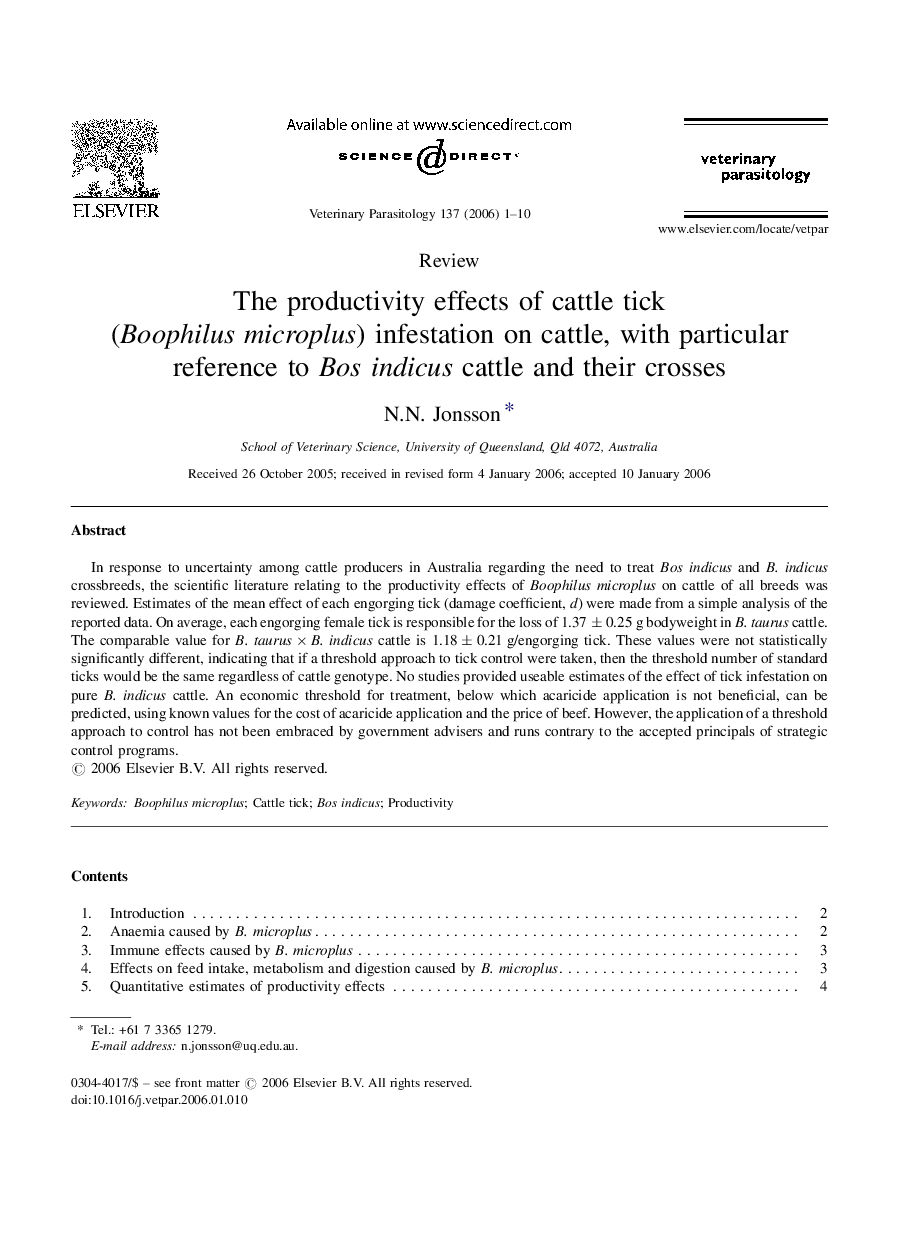| Article ID | Journal | Published Year | Pages | File Type |
|---|---|---|---|---|
| 2472637 | Veterinary Parasitology | 2006 | 10 Pages |
In response to uncertainty among cattle producers in Australia regarding the need to treat Bos indicus and B. indicus crossbreeds, the scientific literature relating to the productivity effects of Boophilus microplus on cattle of all breeds was reviewed. Estimates of the mean effect of each engorging tick (damage coefficient, d) were made from a simple analysis of the reported data. On average, each engorging female tick is responsible for the loss of 1.37 ± 0.25 g bodyweight in B. taurus cattle. The comparable value for B. taurus × B. indicus cattle is 1.18 ± 0.21 g/engorging tick. These values were not statistically significantly different, indicating that if a threshold approach to tick control were taken, then the threshold number of standard ticks would be the same regardless of cattle genotype. No studies provided useable estimates of the effect of tick infestation on pure B. indicus cattle. An economic threshold for treatment, below which acaricide application is not beneficial, can be predicted, using known values for the cost of acaricide application and the price of beef. However, the application of a threshold approach to control has not been embraced by government advisers and runs contrary to the accepted principals of strategic control programs.
